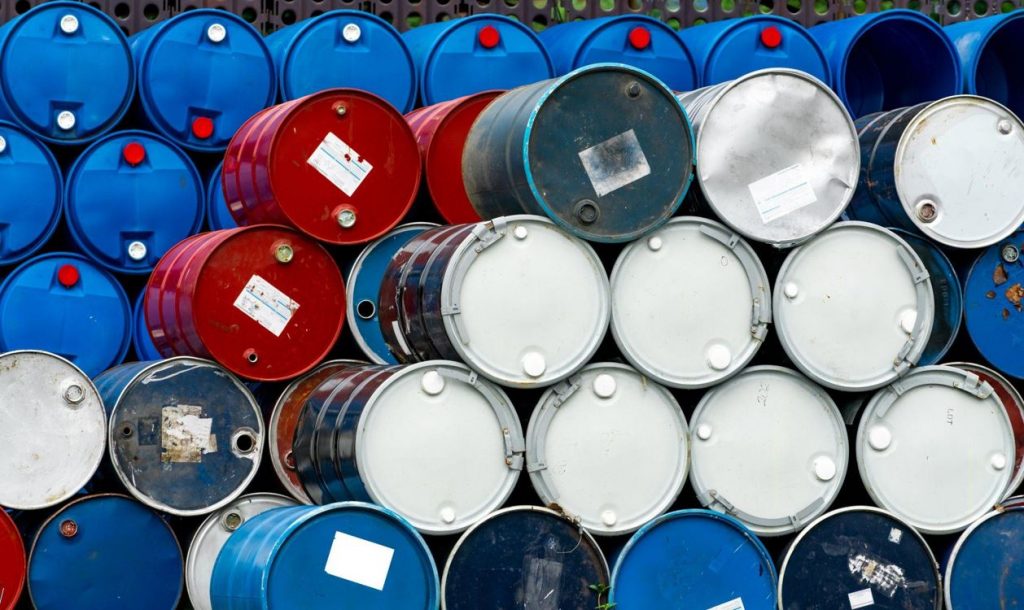Chemical Waste Disposal: Spent Caustic & Alkali Waste Guide

Chemical Waste Disposal Company: Guide to Spent Caustic & Alkali Waste Management
Learn how to comply with hazardous waste regulations. Find the right chemical waste disposal company for managing corrosive alkali waste, spent caustic, and other industrial byproducts.
1. The Imperative of Compliant Chemical Waste Disposal 🧪
The proper management of chemical waste is a fundamental regulatory requirement and ethical imperative for all generating businesses. The most critical focus is on hazardous waste, which is classified by distinct dangerous characteristics:
- Ignitability 🔥: Materials that pose a fire risk.
- Corrosivity 🧪: Substances that can damage tissue or metal, such as strong acids or bases like alkali waste.
- Reactivity 💥: Materials that are unstable or release toxic gases when mixed or subjected to specific conditions.
- Toxicity ☠️: Waste that is harmful to health or the environment through leaching or exposure.
Case Study: Hazardous Alkali Waste and Spent Caustic
A prime example of a highly regulated corrosive waste is spent caustic. This is a frequent byproduct from the oil refining and petrochemical industries, where it results from using sodium hydroxide (caustic soda, a strong alkali) to purify hydrocarbons by ‘scrubbing’ out impurities like mercaptans and sulfides.
Spent caustic is notoriously difficult to manage because it is both:
- Highly Alkaline (High pH): Making it extremely corrosive.
- Contaminated: Loaded with high levels of organic compounds and sulfides, which results in exceptionally high Biochemical Oxygen Demand (BOD) and Chemical Oxygen Demand (COD) readings.
Unlawful disposal, even via a floor drain, risks devastating environmental pollution and triggers severe legal penalties and substantial fines. Consequently, securing a licensed and experienced dispose chemical waste partner is non-negotiable for compliance.
2. Selecting a Chemical Waste Dispose Company 🤝
Under strict environmental law, the waste generator retains “cradle-to-grave” liability for the material. Therefore, the choice of your chemical waste dispose company is the most critical decision in the compliance chain.
Essential Steps for Waste Disposal Compliance:
- Waste Classification and Characterization: Every waste stream must be accurately identified and documented (e.g., as “Spent Caustic,” a corrosive alkali waste, or by specific regulatory codes like “D003 – Reactive Sulfide” under US RCRA). This analysis determines the safe storage and legal treatment method.
- Segregation and Storage: Waste must be securely separated and stored in compatible, leak-proof containers. Containers must be clearly labeled and, importantly, incompatible chemicals (like acids and bases) must never be mixed.
- Use an Authorized Carrier: You must only contract a company that is a licensed hazardous waste carrier with verifiable permits. They are responsible for transport to an authorized Treatment, Storage, and Disposal Facility (TSDFs).
- Documentation (Manifests): Compliance is proven via paperwork. You must maintain detailed hazardous waste manifests (consignment notes) that provide an unbroken chain of custody from your facility to the final destination.
Disposal Methods for Hazardous Chemical Waste:
The industry prioritizes the **Waste Hierarchy**, favoring recycling and treatment over landfill whenever possible.
| Waste Type Example | Disposal/Treatment Method | Description |
|---|---|---|
| Spent Caustic/Alkali Waste | Neutralization/Chemical Treatment | Reacting the highly alkaline base with an appropriate acid to adjust the pH, eliminating corrosivity before further treatment or discharge. |
| Flammable/Organic Waste | High-Temperature Incineration | Thermal destruction that converts hazardous organic materials into ash and flue gas under controlled conditions. |
| Contaminated Sludges | Stabilization/Secure Landfill | Mixing the waste with binding agents (like cement or lime) to physically and chemically trap hazardous compounds for safe containment in a licensed landfill. |
3. External Resources and Contact Information
For official guidance on hazardous waste regulations, consult authoritative sources such as the U.S. Environmental Protection Agency (EPA) or your local government’s environmental department. A useful guide to understanding regulatory compliance can be found here: EPA: Learn About Hazardous Waste.
To inquire about services specific to the complexities of spent caustic and alkali waste management, you may contact the relevant waste management specialists. For example:
-
- **Contact Name:** Nima Mohammad Rahimi
- **Contact Email:** info@pnprocess.com
- **Contact Phone:** +966896964506


I am delighted that I noticed this website, just the right info that I was searching for! .